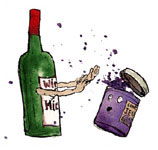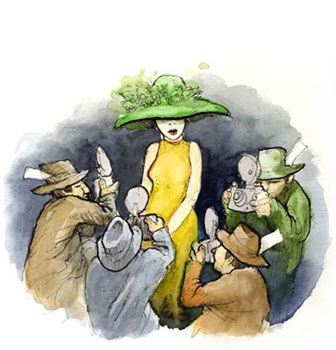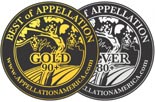
 Ninety per cent of Michigan’s vineyards fall within this appellation in the state’s southwestern corner. This area is also the historic cradle of Michigan viticulture with commercial vineyards dating back as far as 1867. Since the region is part of the great Fruit Belt that produces most of America’s grapes for juice and jelly production, most of the area’s vineyards are planted to labrusca varieties like Concord and Niagara. Thus, the Lake Michigan Shore AVA wine grape acreage only amounts to a small percentage of its total, even though this acreage still represents nearly half of Michigan’s total wine grape production. Of the wine grapes now planted, vinifera varieties are a rapidly expanding portion of the portfolio. The broad AVA boundaries - which include the smaller Fennville appellation - extend as far as 45 miles inland from the lakeshore, and are relatively uniform in climate and soils. The so called "Lake Effect" of Lake Michigan tempers the otherwise extreme northern climate. The characteristic soil and topography of the AVA results from a glacial moraine, with its slopes giving vineyards increased air-drainage to the lake, reducing the danger of frost settling on vines. This AVA has a warmer growing season, up to two or three weeks longer than northwestern Michigan.
Ninety per cent of Michigan’s vineyards fall within this appellation in the state’s southwestern corner. This area is also the historic cradle of Michigan viticulture with commercial vineyards dating back as far as 1867. Since the region is part of the great Fruit Belt that produces most of America’s grapes for juice and jelly production, most of the area’s vineyards are planted to labrusca varieties like Concord and Niagara. Thus, the Lake Michigan Shore AVA wine grape acreage only amounts to a small percentage of its total, even though this acreage still represents nearly half of Michigan’s total wine grape production. Of the wine grapes now planted, vinifera varieties are a rapidly expanding portion of the portfolio. The broad AVA boundaries - which include the smaller Fennville appellation - extend as far as 45 miles inland from the lakeshore, and are relatively uniform in climate and soils. The so called "Lake Effect" of Lake Michigan tempers the otherwise extreme northern climate. The characteristic soil and topography of the AVA results from a glacial moraine, with its slopes giving vineyards increased air-drainage to the lake, reducing the danger of frost settling on vines. This AVA has a warmer growing season, up to two or three weeks longer than northwestern Michigan.
|
|
Current Feature
In the southern Blue Ridge Mountains of North Carolina and Georgia vineyards are small and few, yet the establishment of the Upper Hiwassee Highlands could bring much more.
[>] continue
Appellation Features
[>] see all Lake Michigan Shore features (5)
Related Features
Best of Appellation
See the best wines of
Lake Michigan Shore
Alive & Well here

Chardonnay:
You are the world’s greatest star. Your fame has infiltrated every nook and cranny of the globe, regardless
[>] continue
 Wyncroft Wines:
Wyncroft Wines: 


 Bi-State Upper Hiwassee Highlands an AVA
Bi-State Upper Hiwassee Highlands an AVA  No Citrus But Loads of Intriguing Wines at Lemon Creek Winery
No Citrus But Loads of Intriguing Wines at Lemon Creek Winery  Contessa Wine Cellars:
Contessa Wine Cellars: Round Barn Winery’s
Round Barn Winery’s Rhone Varietals Drive Domaine Berrien's Success
Rhone Varietals Drive Domaine Berrien's Success  Remote Manton Valley New California AVA
Remote Manton Valley New California AVA WAWGG Banquet Explores Washington State Terrior
WAWGG Banquet Explores Washington State Terrior Taking Focus on Appellation
Taking Focus on Appellation





